Writing marketing headlines that are clickable and catch consumer eyes is a challenge for both new and veteran marketers.
There are artistic and scientific elements to writing effective ones, meaning there’s an in-depth process to study and understand.
Even if you have the most interesting and educational content pieces on the Internet, what’s the point if your headlines aren’t enticing enough for people to click? If content doesn’t get read, it won’t get shares or backlinks. And so, it won’t rank.
Bolstered by examples and formulae, below is a guide for marketers to write attention-commanding headlines that earn clicks:
Table of Contents
Start with the 4 U’s – A Marketing Classic
Writing a headline that uses at least two of the four U’s is the first step in catching a reader’s eyes as they scroll through search engine results pages (SERPs) and social media feeds.
The tactic focuses on creating enticing marketing headlines that are:
- Urgent
- Unique
- Useful
- Ultra-specific
Michael Masterson, an entrepreneur and business coach, developed the formula for email subject lines and copy headers. But it’s easy to apply to other content types, such as blog entries and even social media posts.
A. Urgent Headlines
Your readers can’t afford to not read your article. Forgetting it – or even saving it for later – won’t do.
Communicating this necessity is the core of an urgent headline.
You can create headlines that have a sense of urgency by:
- Telling readers a product is in limited supply or a deal ends on an upcoming date
- Example: Only 2 Spots Left! Book Your Trip to Marketing Conference 2016 Now
- Explaining that if you do X now, then Y will happen
- Example: Read these Tips Before Your Next Grocery Store Trip – Your Bank Account Will Thank You
Urgent Headline Examples:
- 10 Mistakes in Your Visual Content Strategy [and Tools to Fix Them!]
- From another post on the Keyhole blog, this example implies that the reader is making mistakes in their visual content strategy but can easily fix them by reading the post and checking out the suggested tools.
- Only 5 Seats Left at the Robben Ford Camp! Special Discount for TrueFire Students
- From an announcement on a popular guitar lessons website, this example creates urgency by stating the number of available spots and further encourages people to click by mentioning a discount.
B. Unique Headlines
If the title seems too familiar, some consumers will skip over your content purely because they’ve read a similar article.
Because a headline is a reflection of the body copy, it’s best to develop supporting content that:
- Educates your readers
- Delivers unique benefits
- Puts a creative spin on a tired subject
But often, you’ll have to create content about unoriginal topics and angles. In this case, crafting a unique headline largely depends on developing a clearly-recognizable personal writing style.
(Un)Unique Headline Examples:

CNN and The Diplomat each have a defined audience, but you can see the headlines in the image above have too much in common. As someone searching for news about North Korea and its relationship with China, I’m most likely to click on the higher search result.
If you’re trying to compete with similar content that ranks well, a title that stands out can help lure readers away from it.
C. Useful Headlines
What’s the point of reading this page or post? That thought likely runs through your head when scanning search results.
Your headline should answer this question by clarifying how a reader stands to benefit.
Try these simple formulae to write a headline that previews the content’s usefulness:
- [Number] Tips to [Increase/Help/Capitalize On] [Subject]
- [Number] Ways to [Avoid/Fight Against] [Subject]
- How to [Get/Improve/Perfect] Your [Subject]
Useful Headline Examples:
- How to Block Third-Party Cookies in Every Web Browser
- There’s no doubt as to what this blog post entails. Those looking to block cookies can clearly see this content piece’s utility and will likely click.
- 5 Ways to Avoid Technology Addiction
- A member of this blog’s target audience can clearly see why the post would help them. Including the number of tips further encourages the reader to click, as they know they can scan the post to absorb its key points.
D. Ultra-Specific Headlines
The point of an ultra-specific headline is to tell readers if an article is for them.
This means your headline must target specific groups within your readership – not your audience in general.
For example, is the article best suited for those new to your industry or veterans? With this level of segmentation, it’s easier to focus on common pain points.
Many ultra-specific headlines come in the form of:
- Lists
- How-To Articles
- Guides (cough, cough)
The Ultimate Ultra-Specific Headline Example:
The For Dummies series has a clear audience.
Topic experts know to stay away from the books, but many newbies recognize them as sources of basic – yet valuable – information.
Understand the New 5th U – User Intent
Writing a headline to match user intent – the dominant reason why people research a given phrase – is a search engine optimization (SEO) tactic that goes beyond keyword targeting.
Despite Google regularly changing its algorithm, the search engine’s goal has always been to improve user experience by ranking content based on:
- High click-through rates
- Low bounce rates
- Long on-site times
Appealing to user search intent is a method of meeting these SEO requirements.
How to Identify User Intent
A. Recognize Search Categories
User intent can be broken down into three categories, according to SEO thought-leader Nate Dame. They are:
- Do something
- Know something
- Go somewhere
Unless you work in travel or transportation, your website content will generally target the first two categories. Users may want to contact you (do something) or learn more about industry topics (know something).
Make sure your headlines meet these desires. For example:
- Do Something: Complete the Form to Outrank Your Competitors – Book a Meeting with SERPMasters
- Know Something: The Top 25 Social Media Analytics Tools
B. Study SERPs
Run searches for a topic you want to write about – using keyphrase variations – before you plan a webpage, blog post or other piece of content.
The top results will indicate what your audience wants to read about.
Here’s a look at the first results page for “hashtag marketing for engagement”:
The top four results are each list-based blog posts giving readers actionable tips to increase engagement through different hashtag strategies. To rank for this keyphrase, you would have to write a similar post that’s more detailed and gives a higher number of tips.
Your headline would have to reflect this. For example:
- The Only Hashtag Guide You Need: 20 Ways to Bolster Engagement Metrics
- 20 Hashtag Tactics to Boost Social Engagement [+ Examples and Free Tools!]
Make it Negative, Says the Research
Headlines with negative superlatives earn 59% more clicks than positive titles, according to research on 65,000 paid link titles from Outbrain – a content marketing platform.
Readers may avoid titles with positive superlatives because:
- They’re overused (and therefore don’t follow the unique rule)
- There could be questionable motives behind the content, such as endorsement
Readers might click on negative titles because they seem impartial and authentic, Outbrain’s researchers speculate. Negative superlatives may also be seen as unexpected and intriguing.
Beware Betteridge’s Law of Headlines
Avoid writing headlines in the form of questions. It may discourage audience members from clicking and reading.
That’s because many people are familiar with Betteridge’s Law. Named after a British technology journalist, it states “Any headline that ends in a question mark can be answered by by the word no.”
If someone knows the answer to the question your article poses, will they bother to click?
Hint: No.
Betteridge’s Law of Headlines may seem like a funny adage, but it’s right at a surprising rate. You can see for yourself – there’s a website that tracks applicable headlines.
Spend Time on It … Then Spend More Time, Said an Advertising Pioneer
You need to take your time when writing, and deciding on, a headline.
There should be drafts, and drafts of drafts. Mashing of the delete key. Sighs of relief when you get to press enter.
Legendary advertising executive David Ogilvy was possibly the biggest proponent of investing time in your headline. His logic was more people read headlines than the content itself.

Plus, the next point won’t get you far if you don’t put effort into each headline you write.
Run an A/B Test
To determine which of your headline drafts best resonates with readers, run an A/B test.
Also called split testing, it’s a way to compare two versions of a marketing piece based on metrics such as click-through rate (CTR). For example, you could send an email with different subject lines to 100 people. The one that yields the highest CTR wins, and will be sent to the rest of your contacts.
A/B testing post and page headlines helps you get more out of your current traffic.
Small changes to your headline and the corresponding copy, such as using less jargon, can result in a greater number of clicks and conversions.
As you can see in example 15 of Wishpond’s collection of 50 A/B testing case studies, a business upped sales by 6.5% by changing a landing page’s headline.
Suggested Tool: Optimizely
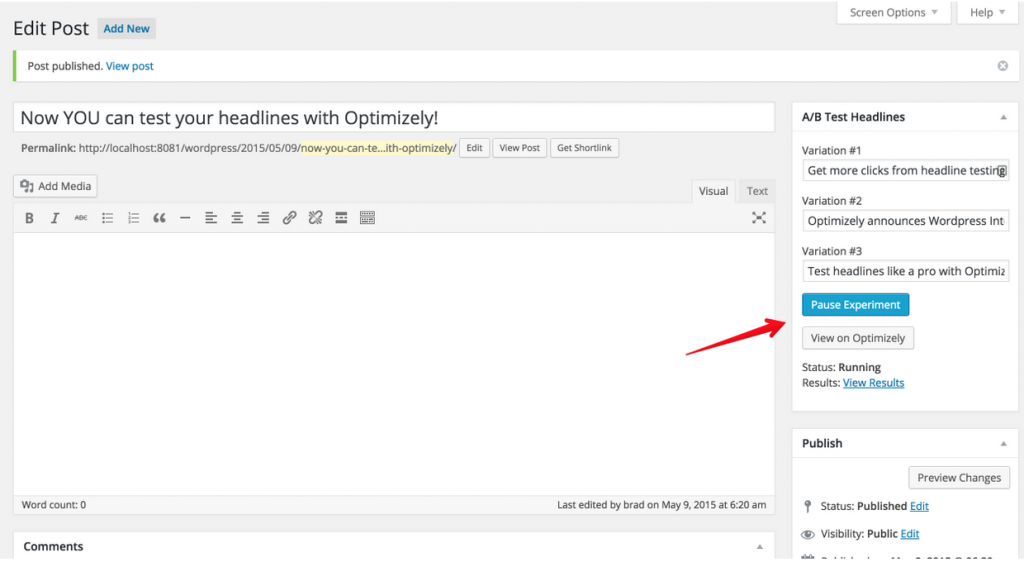
This free split-testing tool can act as a WordPress plugin.
You can set how many headline variations to test and determine which one is most effective by measuring metrics such as page views and engagement – the number of people who clicked somewhere on the page.
BONUS: Improve Subheadlines with Aristotle’s Appeals
Whereas targeted headlines attract visitors, attention-grabbing subheadings keep them on the page and lower your bounce rate.
Take a lesson from Aristotle’s Rhetoric – a 4th century BCE work that introduces the three appeals. Appeals to logic, ethics and emotion are typically seen as evidence types you can use in an argument, but also apply to persuasive or educational content.
| Aristotle’s Appeals Applied to Marketing Headlines | ||
| Logic | Ethics | Emotion |
| “The data is clear: poor metrics tracking will harm your social media strategy.” | “Our social media expertise is shown by our unrivalled client list and campaigns.” | “Your search rankings will plummet without a detailed content strategy.” |
|
|
|
Here’s how a skilled marketer can use Aristotelian appeals to write persuasive subheadlines:
A. Appeal to Logic
Subheadlines that appeal to logic should use facts or statistics that are either new, authoritative or largely-unknown. As someone scrolls through your content, an eye-opening number has the ability to make them stop and want to learn more.
For example, Websites with Blogs Earn 97% More Backlinks certainly makes you take notice.
Give these formulae a shot when writing a subheadline that appeals to logic:
- [Percentage] of the [Market/Audience] Doesn’t Know About [Solution]
- [Activity 1] vs. [Activity 2]: [Activity 1] is [Number] Times More [Effect/Value]
B. Appeal to Ethics
To properly appeal to ethics, a subheadline should be based on opinions from popular experts or the results of well-known events. By leveraging recognizable names and concepts, a reader will see the information you’re sharing as credible.
Try these formulae to create a subheadline that appeals to ethics:
- [Leading Industry Personality] Warns: [Topic]
- Since the [Important Industry-Related Event], [Topic] has [Result]
C. Appeal to Emotions
The goal of these subheadings is to make your readers feel a genuine emotion. It could be excitement, as they stumble upon a new nugget of information. With buzzwords such as “caution” and “warning,” it could also be fear.
That’s why, to some marketing writers, appeals to certain emotions are underhanded. But when done with tact, you can certainly catch a consumer’s attention.
Use these formulae to create a subheadline that appeals to emotion:
- Warning: [Industry Practice] Could do More Harm than Good
- [Company/Consumer] Overcame [Industry Challenge] by [Solution]
By following this guide, you should have a better understanding of how to write attention-commanding marketing headlines and subheadings.
But reading is just the first step, and isn’t a substitute for practice.
What are you waiting for? As Ogilvy would encourage, start writing.
Keyhole is a real-time conversation tracker that provides keyword and hashtag analytics for Twitter and Instagram. Get started for free and search your brand now.
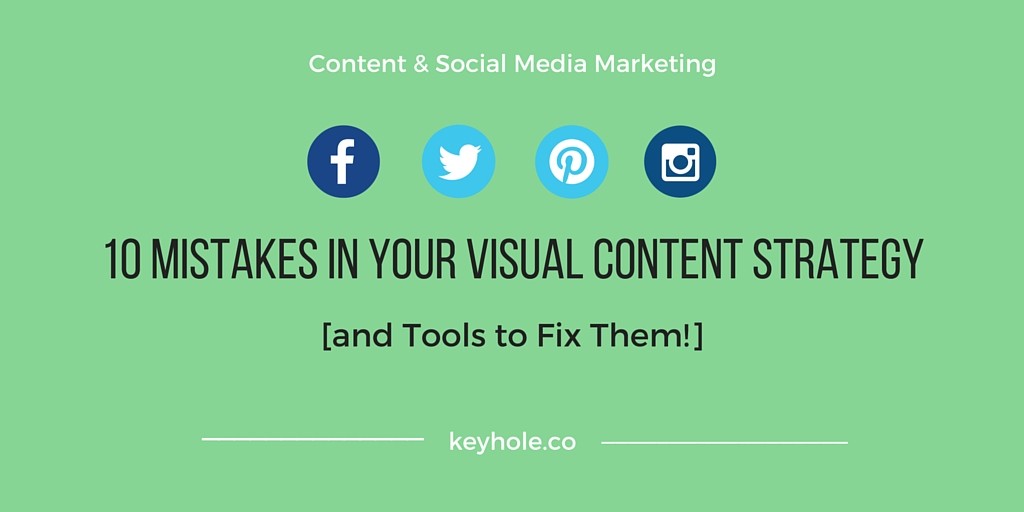

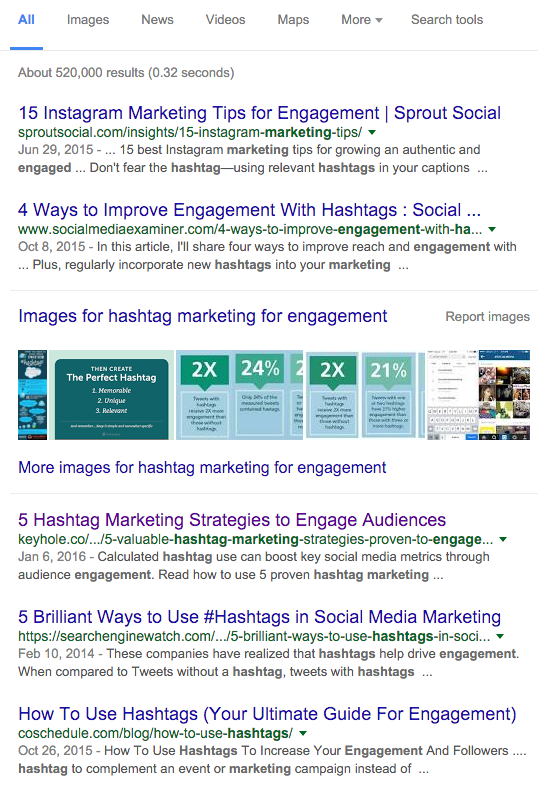

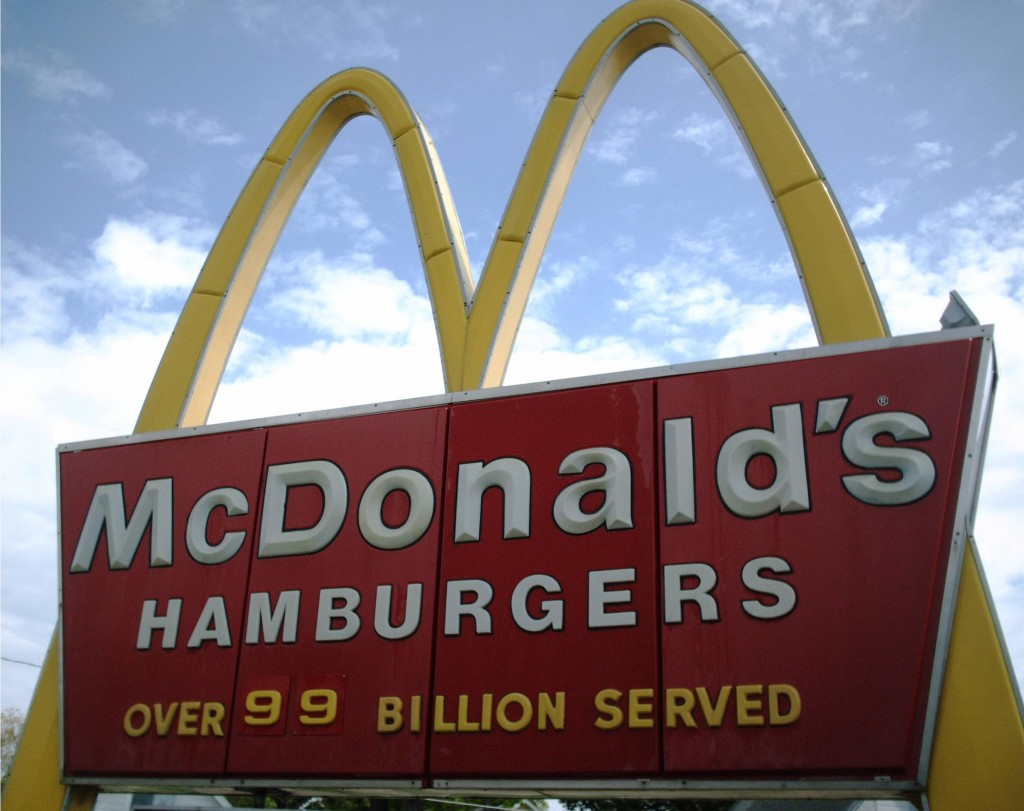
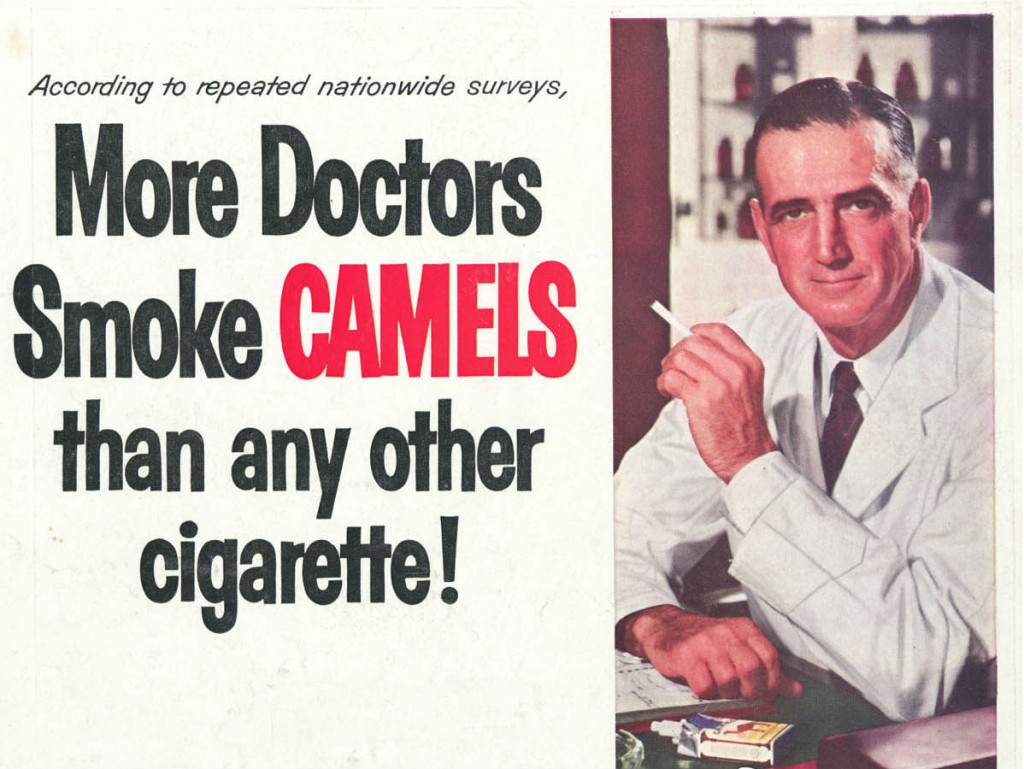
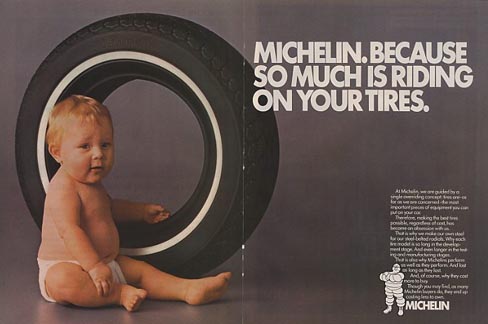
3 thoughts on “The Marketer’s Guide to Writing Attention-Commanding Headlines [with Examples and Formulae!]”
Comments are closed.